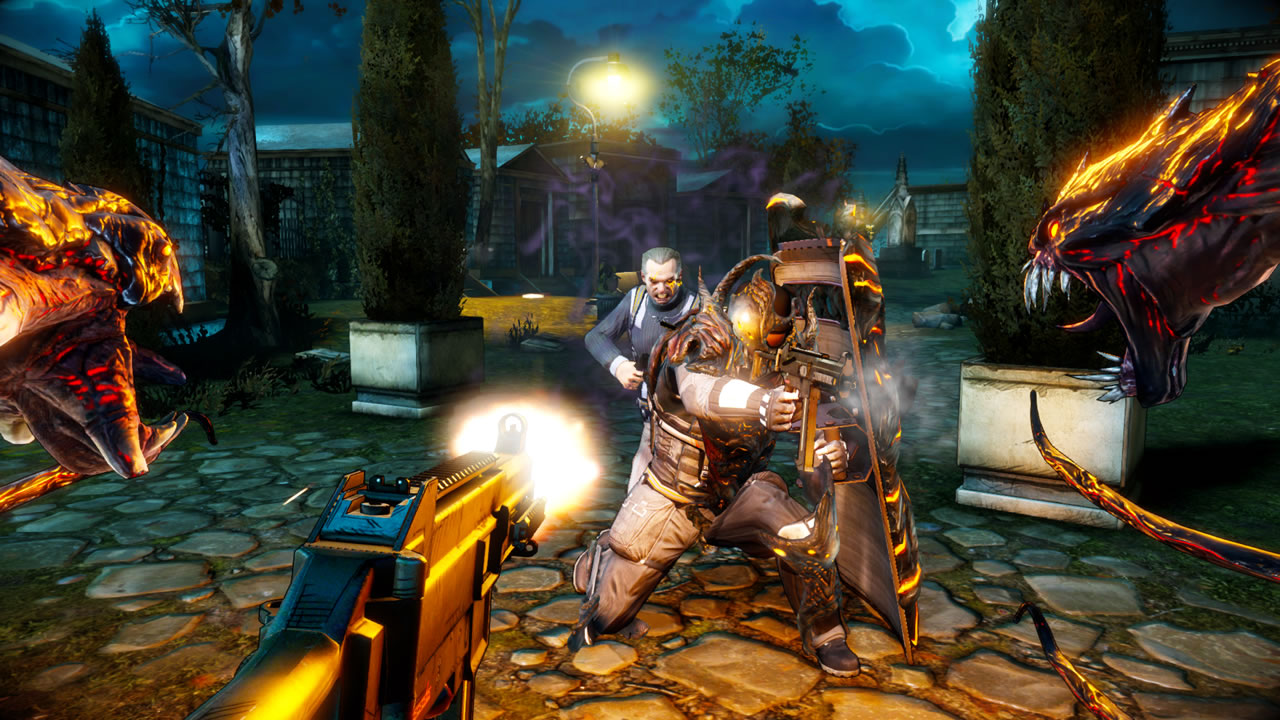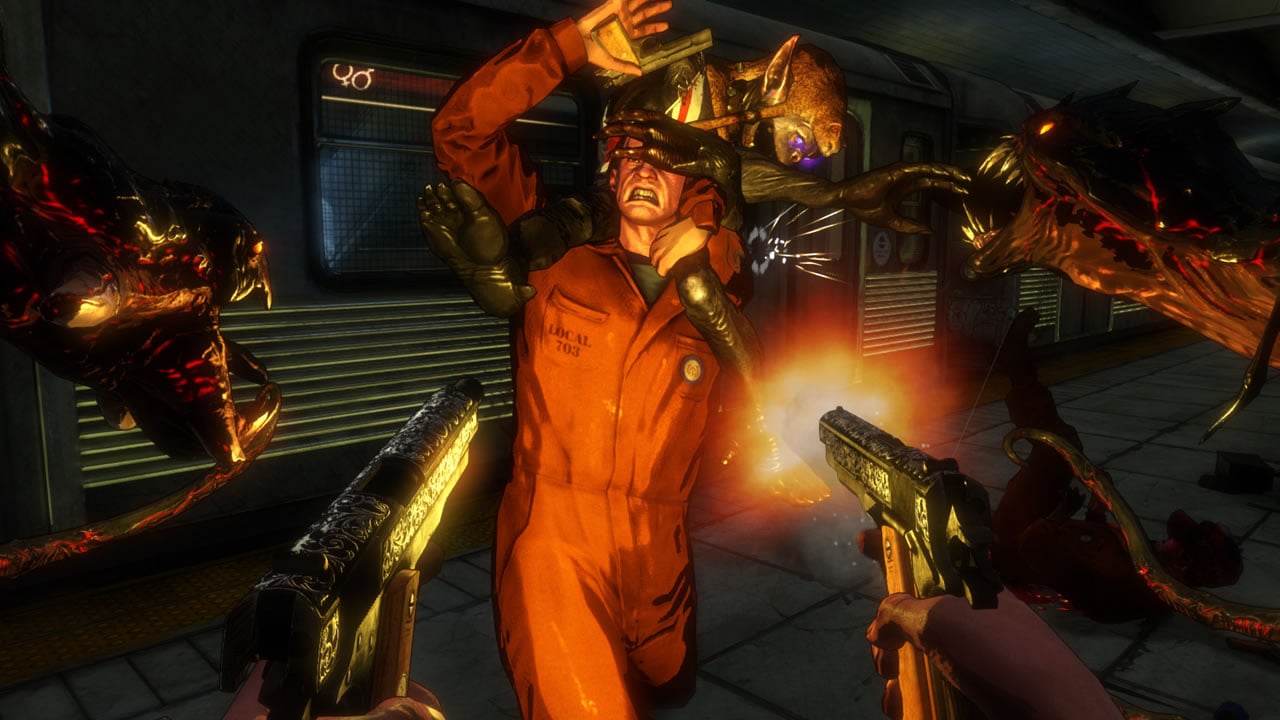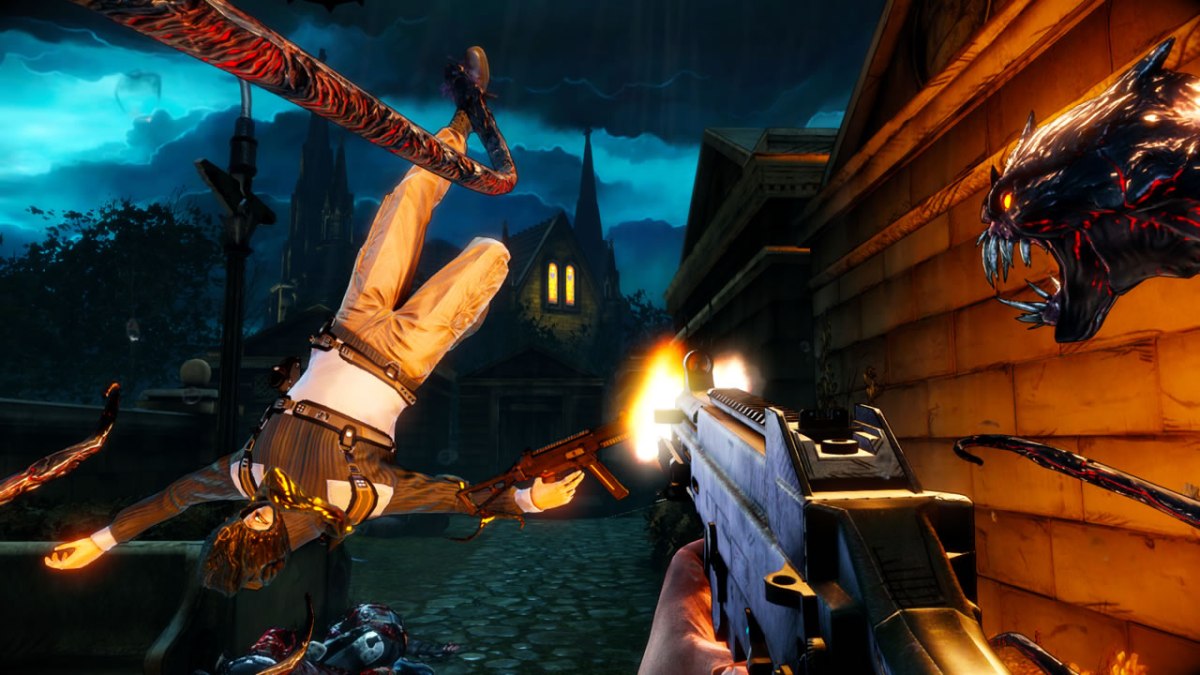Contemporary video games could use more schlock. In the age of Sony prestige, grimy exploitation revenge (see Last of Us: Part II) as well as gory sword and sorcery (see God of War) get advertised as high art. Even when schlock does show up, it tends to be arch or overly self-aware, cheapening the effect. In some sense, there are more small video games than ever, but “B” games have practically ceased to exist.
10 years ago, these kinds of games were on the decline. The next console generation loomed. Time devouring titles like Destiny were just on the horizon. In retrospect, it’s very easy to see the shape of games to come. Increased hardware capabilities means increased manpower and time spent on game production, which means fewer games get made, which means every title has to be a huge return on investment. At the time though, the future probably felt more open.
The Darkness II concludes with a sequel tease, a large bet that never paid off. But even before its ill-advised end, it feels like a game caught between past and future. It’s a linear, level-based first-person shooter, based on an infrequently remembered comic book, with only tertiary amounts of lore. These games just don’t exist anymore. Despite The Darkness II’s multitude of flaws, it makes me miss them.
This sequel picks up soon after the last game. Jackie Estacado is the head mafioso of a cartoonish Italian crime family. With the help of The Darkness, an ancient demonic force inherited from his father, he killed all who stood in his way, but only after his beloved goth gf Jenny died. For two years, Jackie has kept the Darkness suppressed in the chambers of his heart. After a mysterious Brotherhood attempts to take his powers from him, it awakens again. Jackie’s quest for answers will drive him into the shadows of conspiracy and into the heart of The Darkness itself.

The result is an extraordinarily goofy and cartoonishly gory FPS. In addition to Jackie’s dual-wielding mafia ways, The Darkness calls up two demon heads. The left one can grab far away items, eat hearts to recover health, and scoop up vulnerable enemies. The right can slash obstacles, and slice up foes. This is arguably where the game is the most forward-looking. It shares a surprising amount of DNA with Doom (2016), for example, relying on weakening enemies to perform executions that will grant ammo or health. It also has tech trees and collectibles for upgrading abilities.
At first glance, it is overstuffed, but it ends up feeling surprisingly elegant. Every single ability has clear use and I ended up using all of them. It helps a great deal as well that none of the upgrades are vague percentage points on stats, but rather defined abilities that change how one plays. It also helps that the primary method of getting upgrade points is killing enemies. Executions and eating the hearts of tough enemies will grant higher scores, allowing you to spend more on a darkness ability later on. It adds a layer of meta decision-making that gives even minor encounters some fun weight. The game is also appropriately grimy, taking a sadistic glee in the dismemberment of human beings that I honestly find kind of refreshing. Gore can be fun.
Frame for frame, The Darkness II looks better than its predecessor, forsaking badly aged Xbox 360 realism for a cell-shaded mimic of its comic book origins. The animation is sometimes stilted, but it rarely ventures into the uncanny. The backdrops are legitimately gorgeous. They are a painted blue, New York starry night, melancholy and moody. In trade, though, the sequel loses the hazy surrealism of its predecessor. The previous game’s WWI sequences, in which Jackie attempts to get the darkness under control by diving into the trauma nightmares of his veteran grandfather, are stark and haunting. It pulls on The Cabinet of Dr. Caligari as much as the hazy horrorscapes of the first two Playstations. For a minor Xbox 360 shooter, the game conjures some legitimately frightening and unsettling images. This game’s replacement is an asylum, where the game pulls some forgettable and ablest “what is real” pastiche. It’s a far less striking setting, and the game feels that loss at every turn.
The Darkness II also lacks a down-to-earth quality that its predecessor had. The first title may have been a game about being a cool gangster with an evil demon, but it was also a game about getting cookies with your aunt or watching the entirety of To Kill a Mockingbird on a tiny CRT with your girlfriend. The game had a tiny subway network and a loose affiliation of New York clichés who get little side quests. Sometimes the game is about reading a map to find the right address to visit. There’s a pleasing commitment to mundanity in-between bouts of carnage that is mostly absent from the sequel. However, there’s a surprisingly resonant dimension here too. Jackie is rich now; Of course he doesn’t take the subway. Of course all the people he hangs out with are lackeys.

In keeping with this schlocky tone and inspirations, The Darkness II does have some wanton cruelty. A sex worker helps Jackie enter a brothel run by the villainous Brotherhood. The game leers at her, then kills her offscreen, and hangs her corpse in the background of a lengthy cutscene. The villain is disfigured and disabled. Fortunately, the game doesn’t draw much attention to it, but the subtext is still unpleasant, normal human traits made into inhuman attributes of the obviously villainous. It’s also worth noting the multiplayer co-op “vendettas” mode, which is unsurprisingly populated by a set of racist stereotypes.
Women die around Jackie constantly, implying that Jackie’s proximity to this fundamental evil leads him on ever-escalating destructive quests of revenge. Which then further necessitates the use of The Darkness. The very mechanism the game advertises itself on is also explicitly diabolical; the high scores and executions of the game further the Darkness’ power. The game constantly emphasizes that Jackie is never really in total control. The thrill of power only draws him deeper into a violent addiction. Furthermore, as long as Jackie’s bloodline continues, the Darkness will have a host. This places Jackie into a cycle of patriarchal violence, passed from father to son, throughout all of human history.
The alternative is an idealized femininity. Jenny is at once a tired trope of a dead woman, motivating the rough man on his revenge spree. She also represents the life Jackie might have had, if the darkness had not taken it. Jackie, in a certain sense, wants to be Jenny. He wishes he was dead and she was alive. It’s the kind of material that is rife for simultaneously sarcastic and earnest queer readings. Is the conflation of femininity with virtue misogynistic? Absolutely, but the game nevertheless falls into some interesting subtext. None of it is especially deep, and it is occasionally callous, but it does have some real bite.
In some sense, The Darkness II is a mediocre game. It’s a bargain bin shooter released in an age of them. It’s corny, deeply silly, and foundationally crude. Even in listing its flaws, I feel almost nothing but admiration for it. It’s probably easier to love now than it was then. Perhaps that is a good sign. Of all the games of its kind, The Darkness II has some staying power. If you want a reminder of what games were, and could be, not so long ago, you could do far worse than this jolt of silly schlock.







Published: Feb 7, 2022 04:31 pm